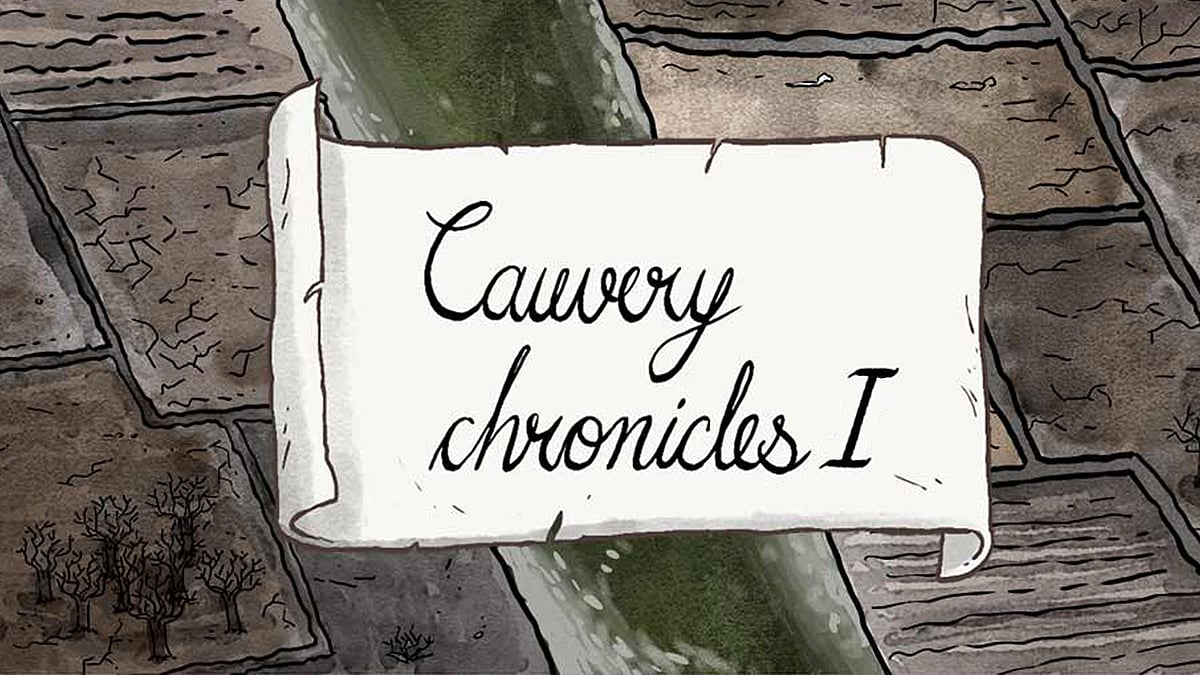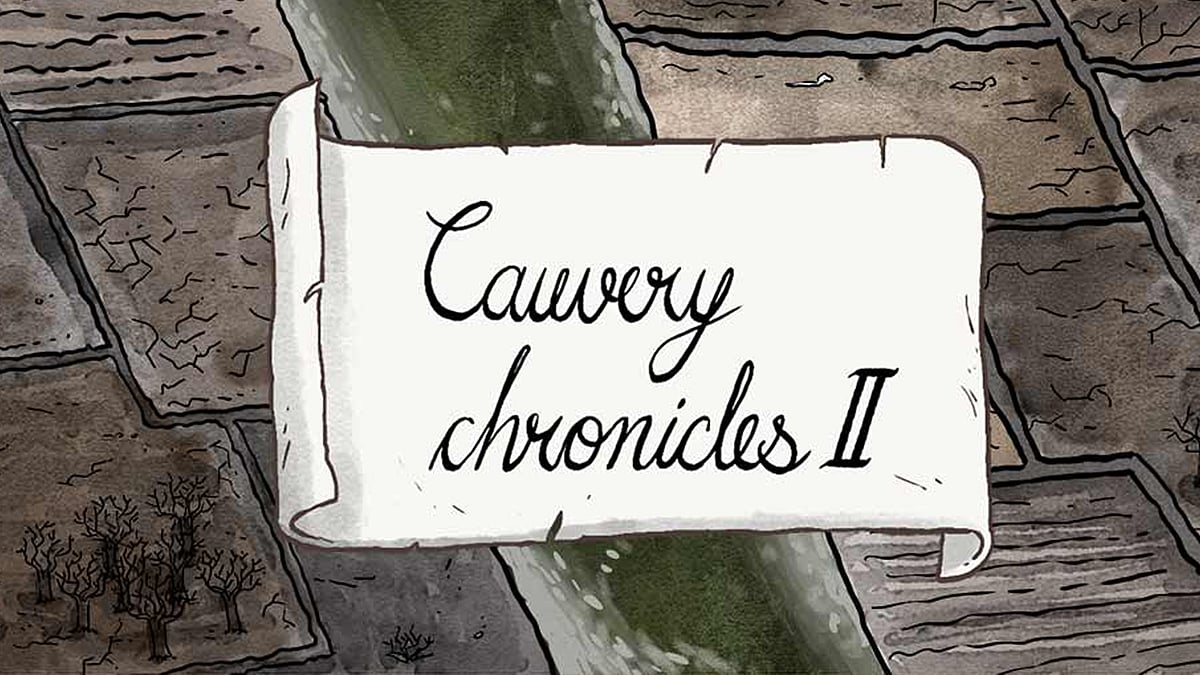Bengaluru bandh: Unpacking the decades-long Cauvery dispute between TN and Karnataka
Today’s bandh was called to protest against the release of Cauvery water to Tamil Nadu.
The century-old spar between Tamil Nadu and Karnataka over sharing the water from Cauvery river has again spilled over with the water crisis intensifying in the region after poor rainfall.
After the Supreme Court ordered Karnataka to release 5,000 cubic feet per second (cusecs) of Cauvery water to Tamil Nadu, farmers’ organisations in Karnataka called for a bandh in Bengaluru on September 26.
The Tamil Nadu government, meanwhile, approached the Supreme Court asking the Karnataka government to release 7,200 cusecs of water per day from Karnataka’s reservoirs.
The 765-km-long Cauvery river — which originates in Karnataka’s Talacauvery in Kodagu district — flows through Haasan, Mandya, and Mysuru districts of the state before entering Tamil Nadu. It traverses through Dharmapuri, Erode, Karur, Trichy, Cuddalore, Pudukottai, Nagapattinam, Thanjavur, and other districts in Tamil Nadu. It also flows through Kerala and Puducherry before draining into the sea.
The water from Cauvery feeds several of these districts as a source of irrigation. Karnataka’s capital city, Bengaluru, also depends on it for its daily water needs.
A dispute since British Raj
The Cauvery water sharing dispute has been a bone of contention between Karnataka and Tamil Nadu since the time of the British Raj. Many of the districts in both states are dependent on the Cauvery for irrigation, while the city of Bengaluru gets its water from the river.
In order to understand the long-standing issue, one has to go back to 1892. The Cauvery water sharing dispute began that year between the Madras Presidency under the British Raj and the princely state of Mysore as the two regions could not agree over how to divide the water between themselves.
In 1910, the two states began conceptualising the idea of constructing reservoirs to store the river water.
As the two sides could not come to terms, the British presided over the issue of water sharing and in 1924, the Madras Presidency and Mysore state signed an agreement where the rules regarding the water usage of Krishna Raja Sagar (KRS) dam were listed out.
The 1924 agreement gave the Madras Presidency and Mysore state the right to use surplus water from the Cauvery.
Back then, the Madras presidency had objected to the construction of the KRS dam. However, when the agreement was signed, it gave Madras the freedom to construct the Mettur dam.
As per the agreement in 1924, Tamil Nadu and Puducherry would get 75 percent of the surplus water, while Karnataka would get 23 percent. The remaining would go to Kerala. There were also restrictions on how much land could be irrigated
Post-independence
The issue of water sharing became a real problem after the re-organisation of the states in 1956. After the division of states, several protests took place in both Tamil Nadu and Karnataka, which sometimes escalated into violence. Through the late 20th century, Tamil Nadu was opposed to the construction of dams on the river by Karnataka.
Karnataka’s argument was that the 50-year time period for the 1924 agreement had ended in 1974, and hence the state was not obliged to stick to the regulations, especially since the river originated in the state.
This became a problem for Tamil Nadu as the state had become dependent on Cauvery water, especially for a huge area of agricultural land in the delta area.
Between 1960 and late 1980s, Karnataka built four dams on the Cauvery: Hemavati, Harangi, Kabini and Suvarnavathy. Tamil Nadu, the lower riparian state, argued that this put them in a precarious situation and approached the Supreme Court.
Karnataka argued that the river water sharing should follow international norms (divide the water in equal proportions). The Karnataka government had suggested that the two states could obtain 47 percent of the water each and the rest could be split equally between Kerala and Puducherry.
Tamil Nadu was not happy about this, and wanted to abide by the 1924 agreement. In 1986, the farmer’s association in Tamil Nadu’s Thanjavur area moved the Supreme Court demanding that a tribunal be formed for resolving the water-sharing dispute.
In 1990, the apex court heard the petitions submitted by both the states and directed them to strike a negotiation. When dialogue failed, the SC directed the centre to form a tribunal which would decide on the distribution of water between the two states.
The Cauvery Water Disputes Tribunal then calculated the water inflow to Tamil Nadu between 1980 and 1990. In 1991, the tribunal in its interim order directed Karnataka to ensure that 205 tmc ft of water reaches Tamil Nadu every year. The tribunal also ordered Karnataka to halt its plans to increase irrigated land area.
The tribunal’s decision was not received well and riots erupted in both the states. Karnataka rejected the tribunal’s award and sought its annulment in the Supreme Court. The SC struck down the state’s ordinance attempting to nullify the award and upheld it instead.
In 1993, Tamil Nadu chief minister Jayalalithaa went on a hunger strike at the MGR memorial in Chennai to demand the reversal of the tribunal’s interim order. Karnataka said the state was facing drought, and hence could not release water.
In 1998, the Cauvery River Authority was formed and tasked with the implementation of the CWDT’s interim order. The CRA consisted of the prime minister as the chairperson and the chief ministers of the four states and UT as its members.
After extended considerations, the Cauvery Water Disputes Tribunal put forth its final award in 2007. Out of the available 740 tmc ft water, 419 tmc ft was allocated to Tamil Nadu, 270 tmc ft to Karnataka, 30 tmc ft to Kerala and 7 tmc ft to Puducherry.
The CWDT ordered that in a normal year, Karnataka must release 192 tmc ft to Tamil Nadu (as against 205 tmc ft in the interim award) in monthly deliveries at the interstate border, Biligundlu. This comprised 182 tmc ft from the allocated share of Tamil Nadu, including 10 tmc ft for environmental purposes.
In a distress year, the tribunal order stated that the allocated shares be proportionately reduced among Kerala, Karnataka, Tamil Nadu and Puducherry. The lack of clarity on the sharing of water during a distress year is the reason for the resurgence of the dispute.
In 2013, the central government notified the final award. And Jayalalithaa, the then chief minister of Tamil Nadu approached the SC for the formation of the Cauvery Management Board, which also did not bear fruition.
Since then, on many occasions, the two states have sparred over the sharing of water, with Karnataka arguing that in the years with scanty rainfall, it would not be able to release water to Tamil Nadu.
Allocation after 2018 verdict
In February 2018, the Supreme Court reallocated the water share. Tamil Nadu’s share of water was reduced to 177.25 tmc ft from 192 tmc ft. The SC added that 20 tmc ft of groundwater in Tamil Nadu had not been accounted for.
The Supreme Court also said that Karnataka can expand its irrigation area. Bengaluru would receive 4.75 tmc ft more. Karnataka’s allocation was changed to 284.75 tmc ft, while the allocation for Puducherry and Kerala remained unchanged.
And recently on September 21, 2023, the Supreme Court had ordered Karnataka to release 5,000 cubic feet per second (cusecs) of Cauvery water to Tamil Nadu. This did not go down well with various farmers groups and pro-Kannada activists, who called for a bandh on Tuesday, September 26.
Meanwhile, the Tamil Nadu government approached the Supreme Court asking the Karnataka government to release 7,200 cusecs of water per day from Karnataka's reservoirs. Senior advocate Mukul Rohtagi, appearing for Tamil Nadu, contended that CWMA “mechanically” reduced the quantity to 5,000 cusecs per day against an amount of 7,200 cusecs per day recommended by the CWRC taking the situation into consideration.
On the other hand, senior advocate Shyam Divan, appearing for Karnataka, argued that the CWMA should have not ordered for release of more than 3,000 cusecs per day from the dams of Karnataka. Divan said that the state is facing shortage of drinking water as well. He said, “This drinking water aspect is extremely crucial. As far as Tamil Nadu is concerned, it is essentially for irrigation but for Karnataka, it is drinking water as well as irrigation.”
This report was republished from The News Minute as part of The News Minute-Newslaundry alliance. It has been lightly edited for style and clarity. Read about our partnership here and become a TNM Member here.
 Cauvery: A basin on the burn
Cauvery: A basin on the burn Cauvery Chronicles II: Ponni’s Perish
Cauvery Chronicles II: Ponni’s Perish